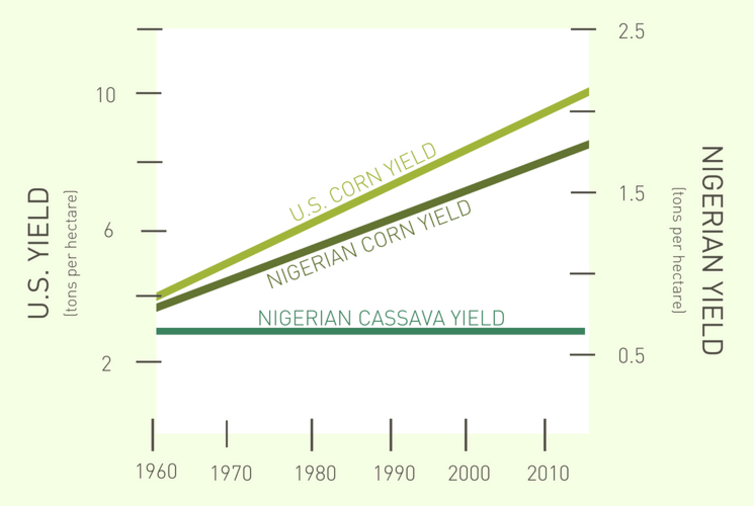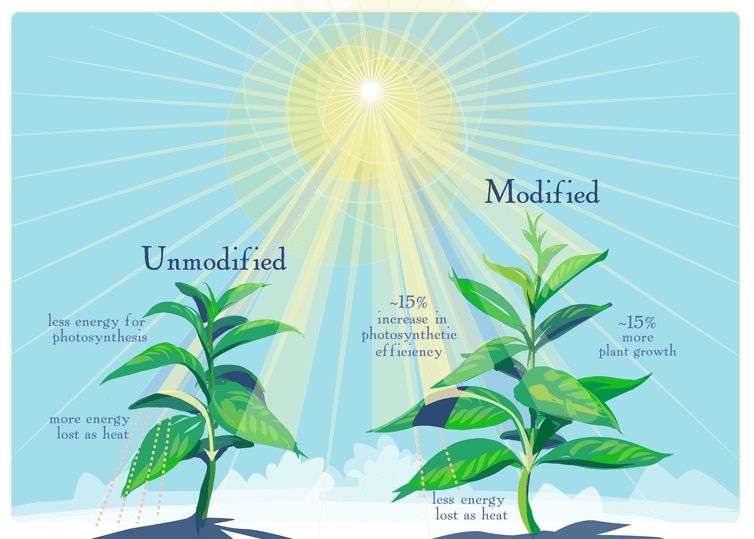Editor’s note: This story describes a publication in the journal New Phytologist. The authors of this story are three of the publication’s authors who are all researchers at the University of Illinois at Urbana-Champaign.
Cassava, a woody shrub also known as manioc, yuca, tapioca and mandioca,…is the third most important source of calories in the tropics, behind rice and corn, and sustains an estimated 800 million throughout Africa, Asia and Latin America. In sub-Saharan Africa, it provides 30 to 50 percent of all calories consumed.
But despite its widespread consumption, cassava yields have not improved in a quarter of a century. In a recently published study, our research group identified 14 paths for improving cassava yield potential through genetic modifications, both engineered and bred.
…
According to our review, cassava yields per acre in Nigeria – the major producer in Africa – have flatlined since 1961. By contrast, corn yields in Nigeria, as in the United States, have more than doubled over the same period.

Hacking photosynthesis has long been considered to be a holy grail of plant biology.
By genetically modifying tobacco plants, we increased the amount of plant tissue that they produced by 14 to 20 percent in real-world, replicated field trials where light, rainfall and other factors are unpredictable….The process we modified is common to all plants, which strongly suggests that this approach should work just as effectively in cassava and other food crops.

The GLP aggregated and excerpted this blog/article to reflect the diversity of news, opinion, and analysis. Read full, original post: Research shows how to grow more cassava, one of the world’s key food crops































